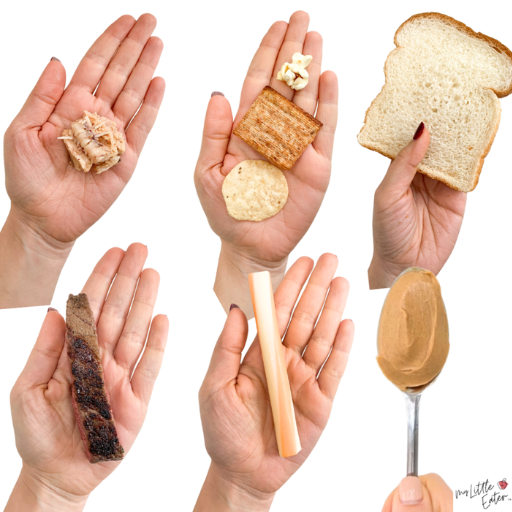
Introducing solid foods to babies and toddlers is a thrilling yet stressful moment for the parents. As infants graduate from purees to different food textures, what is safe for them becomes very important. Out of so many snacks available to children, pretzels remain on the list of concerns. Even though one may consider them a handy snack or quite inoffensive, it is pertinent to check how appropriate they are for children. This paper investigates the choking potential of pretzels, providing a discussion related to texture, size, and nutrients. It follows up with advice for parents on how to make these decisions. Such understanding of the risks posed will enable the caregivers to make sound decisions that will help avert danger to the children during this phenomenon.
 Pretzels present a risk for young toddlers and babies because of their hard and small shape, which can easily obstruct the windpipe of an infant. Furthermore, the rhythmic movement of the jaw when chewing these types of snacks is still developing. Obstruction of the trachea due to food that is not easily chewable or can splinter into tiny, sharp edges is exacerbated in infants and toddlers because they have narrower airways and immature oral motor control. So, instead of pretzels, parents are advised to give children softer food options that are age-appropriate until their mastication and swallowing skills are more advanced.
Pretzels present a risk for young toddlers and babies because of their hard and small shape, which can easily obstruct the windpipe of an infant. Furthermore, the rhythmic movement of the jaw when chewing these types of snacks is still developing. Obstruction of the trachea due to food that is not easily chewable or can splinter into tiny, sharp edges is exacerbated in infants and toddlers because they have narrower airways and immature oral motor control. So, instead of pretzels, parents are advised to give children softer food options that are age-appropriate until their mastication and swallowing skills are more advanced.
 In order to reduce the chances of choking while feeding children pretzels, parents should first select appropriately sized and chewy pretzels. Pretzels can be cut into small pieces for the convenience of the child. It’s advisable to drip some water on the pretzel to make it softer and easier to chew. Never leave the child unattended while eating; the child should be sitting still and not running or lying on a bed as the chances of choking increase. Promote chewing of the food well before swallowing it, and do not provide pretzels to children who cannot handle harder snacks developmentally. If such precautions are taken, the threats related to pretzel choking hazards may be reduced.
In order to reduce the chances of choking while feeding children pretzels, parents should first select appropriately sized and chewy pretzels. Pretzels can be cut into small pieces for the convenience of the child. It’s advisable to drip some water on the pretzel to make it softer and easier to chew. Never leave the child unattended while eating; the child should be sitting still and not running or lying on a bed as the chances of choking increase. Promote chewing of the food well before swallowing it, and do not provide pretzels to children who cannot handle harder snacks developmentally. If such precautions are taken, the threats related to pretzel choking hazards may be reduced.
 Pretzels can be counted as choking hazards for children as they feature among the top-ranked in the list of choking risks. The size, shape, and hardness of pretzels can make it challenging for kids to chew and swallow them appropriately which increases the chance of choking. When kids have pretzels, parents should watch out for the kids, and the pretzels should be broken down into little pieces that are suitable for toddlers or younger-aged kids.
Pretzels can be counted as choking hazards for children as they feature among the top-ranked in the list of choking risks. The size, shape, and hardness of pretzels can make it challenging for kids to chew and swallow them appropriately which increases the chance of choking. When kids have pretzels, parents should watch out for the kids, and the pretzels should be broken down into little pieces that are suitable for toddlers or younger-aged kids.
 Signs of a child choking on pretzels are often gradual but can sometimes be extreme. Some of the first indicators, such as a child’s attempt to clear their airway, are more than likely a result of them spitting or gagging, as they often do when they’re choking. You may see them clutching their throat and panicked or distressed facial expressions, as well as respiratory effort. If these attempts are not effective, the child may become cyanotic, which is a bluish discoloration of the skin caused by oxygen starvation. A very important sign that there is an obstruction of the windpipe is the lack of sounds or cries from the child. In this case, immediate maneuvers should be performed to remove the pretzel that is blocking the child’s airways.
Signs of a child choking on pretzels are often gradual but can sometimes be extreme. Some of the first indicators, such as a child’s attempt to clear their airway, are more than likely a result of them spitting or gagging, as they often do when they’re choking. You may see them clutching their throat and panicked or distressed facial expressions, as well as respiratory effort. If these attempts are not effective, the child may become cyanotic, which is a bluish discoloration of the skin caused by oxygen starvation. A very important sign that there is an obstruction of the windpipe is the lack of sounds or cries from the child. In this case, immediate maneuvers should be performed to remove the pretzel that is blocking the child’s airways.
 To safely introduce solid foods to babies and toddlers, parents must adhere to some specific practices regarding his or her safety and health. For example, a single-ingredient food, for example, pureed fruit, pear, or fruit of a child's breath, should be introduced into one food every time and observed for allergic reactions, rashes, vomiting, and diarrhea. Soft consistency should be stressed to avoid choking and mildly increased over periods as the child gets used to eating solid foods. Small portions should be served, and food should be cut into bite-sized pieces, with supervision throughout the mealtime. Furthermore, self-feeding should be encouraged, but only soft foods should be used. Hard or round foods should never be allowed as they present a choking hazard. In such scenarios, the process of introduction should be discussed with the child’s doctor so that he or she is able to adjust to the child’s specific environment and developmental stage.
To safely introduce solid foods to babies and toddlers, parents must adhere to some specific practices regarding his or her safety and health. For example, a single-ingredient food, for example, pureed fruit, pear, or fruit of a child's breath, should be introduced into one food every time and observed for allergic reactions, rashes, vomiting, and diarrhea. Soft consistency should be stressed to avoid choking and mildly increased over periods as the child gets used to eating solid foods. Small portions should be served, and food should be cut into bite-sized pieces, with supervision throughout the mealtime. Furthermore, self-feeding should be encouraged, but only soft foods should be used. Hard or round foods should never be allowed as they present a choking hazard. In such scenarios, the process of introduction should be discussed with the child’s doctor so that he or she is able to adjust to the child’s specific environment and developmental stage.
What Makes Pretzels a Choking Hazard for Babies and Toddlers?
 Pretzels present a risk for young toddlers and babies because of their hard and small shape, which can easily obstruct the windpipe of an infant. Furthermore, the rhythmic movement of the jaw when chewing these types of snacks is still developing. Obstruction of the trachea due to food that is not easily chewable or can splinter into tiny, sharp edges is exacerbated in infants and toddlers because they have narrower airways and immature oral motor control. So, instead of pretzels, parents are advised to give children softer food options that are age-appropriate until their mastication and swallowing skills are more advanced.
Pretzels present a risk for young toddlers and babies because of their hard and small shape, which can easily obstruct the windpipe of an infant. Furthermore, the rhythmic movement of the jaw when chewing these types of snacks is still developing. Obstruction of the trachea due to food that is not easily chewable or can splinter into tiny, sharp edges is exacerbated in infants and toddlers because they have narrower airways and immature oral motor control. So, instead of pretzels, parents are advised to give children softer food options that are age-appropriate until their mastication and swallowing skills are more advanced.
Why Pretzels Can Become a Choking Hazard
I can definitely say that pretzels are a choking hazard for younger kids. The concern comes mainly from the combination of the inconvenience of the shape and the hardness of the pretzel. Chewing and swallowing have not quite been developed in children who are less than four years of age. Children at this age do not possess a fully developed chewing reflex, which is able to adapt to the structure of a pretzel, which is involuntarily hard and brittle. As if to add the diminutive size of the children’s air passage, an improperly chewed piece of snack could easily interfere with any form of breath. In light of this situation, I strongly caution parents and those in charge of children to use pretzels and other snacks that are not appropriate for the age of the child’s development.Understanding the Risk of Choking in Babies and Toddlers
I want to speak to the potential worries expressed of pretzels as a type of snack that may pose a risk of choking babies and toddlers because I have worked in the area of pediatric nutrition for a long time. Let us analyze the reasons that make such snacks somewhat dangerous:- Texture and Size: Due to their firm and dense texture, pretzels can be troublesome for young children as they are still developing their chewing skills. If not chewed sufficiently, a child's throat is sufficiently narrow to allow the small, consistent cross-section to become trapped inside.
- Chewing and Oral Motor Skills: At such an early stage, infants and toddlers are still learning how to chew. Their oral motor development is still in progress, rendering it difficult to handle significant chewable foods such as pretzels.
- Airway Size and Development: Children have underdeveloped airways, which are considerably greater than that of adults. [When children inhale food that has not completely been chewed, the lack of proper chewing can function as an obstruction to their airway.]
- Unpredictable Breaking: Pretzels do not break exactly, but once broken, they tend to break into small and sharp pieces, which are more likely to act as a foreign body or occlusion in case of inhalation or swallowing in the wrong way.
How to Modify Foods for Safer Eating
There are several core domains to be factored in when looking to make changes to foods so as to make them safe for consumption by babies and toddlers:- Texture and Consistency: The nature of young children’s development necessitates feeding them with soft and easily mashable or dissolvable foods. Ripe bananas, soft cooked vegetables, or mashed potatoes are some examples of food items that are appropriate for young children’s development. You can also puree solid items to ensure they are smooth and easy to handle.
- Size and Shape: Food items should be cut into smaller pieces about the size of a younger child’s finger in order to minimize the chances of them choking on them. Round-form foods such as grapes and circular-form foods such as cherry tomatoes should also be cut in order to avoid being obstructive shapes as well.
- Moisture Content:Semi –solid foods are easier to swallow and cannot choke an individual easily as compared to dry solids. If swallowing dry solids such as crackers and a toast, they should be drenched in warm water, warm milk, or a safe dipping sauce to ease the moment of swallowing.
- Progressive Complexity: More complex textures should be introduced over time as it would help in further developing a child’s chewing and swallowing abilities. Start with those food items that have only one texture and introduce food items which are made up of mixed textures progressively as the child masters the former texture.
- Avoidance of High-Risk Foods:Practice caution when introducing foods which are regarded as choking risks like whole nuts, raw carrot sticks, hard-boiled candy and popcorn. If however you want to use these, change these by grinding, grating or cooking them until soft enough.
How Can Parents Prevent Choking When Feeding Pretzels?
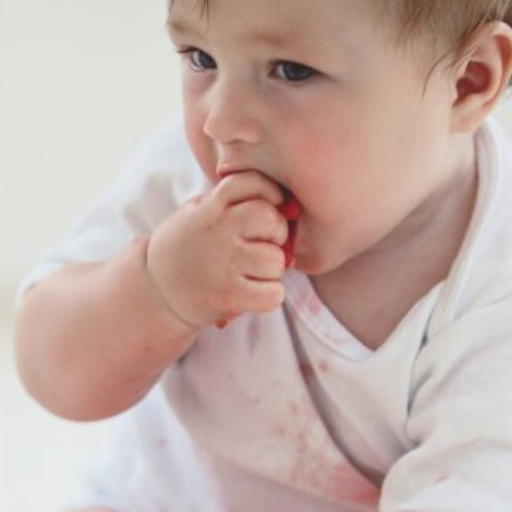 In order to reduce the chances of choking while feeding children pretzels, parents should first select appropriately sized and chewy pretzels. Pretzels can be cut into small pieces for the convenience of the child. It’s advisable to drip some water on the pretzel to make it softer and easier to chew. Never leave the child unattended while eating; the child should be sitting still and not running or lying on a bed as the chances of choking increase. Promote chewing of the food well before swallowing it, and do not provide pretzels to children who cannot handle harder snacks developmentally. If such precautions are taken, the threats related to pretzel choking hazards may be reduced.
In order to reduce the chances of choking while feeding children pretzels, parents should first select appropriately sized and chewy pretzels. Pretzels can be cut into small pieces for the convenience of the child. It’s advisable to drip some water on the pretzel to make it softer and easier to chew. Never leave the child unattended while eating; the child should be sitting still and not running or lying on a bed as the chances of choking increase. Promote chewing of the food well before swallowing it, and do not provide pretzels to children who cannot handle harder snacks developmentally. If such precautions are taken, the threats related to pretzel choking hazards may be reduced.
Setting Up a Safe Eating Environment
The first thing you should do is to ensure that your child's eating area is quiet and has no distractions. This involves switching off television sets, ensuring that the child does not engage in active playtime, and focusing on the meal only. Restrict meals to be at the table and the high chair with sufficient positioning to avoid the chances of choking. Then, make sure that the eating utensils and dishes are made for children’s hands. Dishware should be non-slip plates, cups, and bowls to avoid spills and encourage fast eating. Lighting should also be taken into account; the area where eating takes place should be adequately lit so that both you and your child see what they are eating. The other major issue is the cleanliness and hygiene of the eating area. Make sure that the table area is clean and any food-related containers are closed properly before the meal. These prevent contamination, and hygienic measures are maintained for the child. Following these limits creates a space that is safe and where people are healthy, so it promotes good eating habits.When to Seek Help for a Choking Emergency
In the unlikely event of a choking emergency, it is important to recognize when to call for professional assistance. In this regard, I shall outline some specific criteria that can help one determine when it is appropriate to seek emergency help:- Persistent Choking:In the event that your child’s choking persists and is still unable to dislodge the object by using back blows or abdominal thrusts, you should contact medical services without delay. Choking has always been associated with being life-threatening.
- Inability to Breathe: Should the child not be able to breathe, starting showing blueness on the skin, or is experiencing violent bouts of gagging and coughing but is not able to clear the obstruction, emergency services should be called immediately. Difficulties experienced while trying to breathe indicate the need for urgent medical care.
- Loss of Consciousness: It’s important to note that if a child loses consciousness as a result of choking, it is very important to respond to this situation in a rapid manner. Children who lose consciousness due to choking should be resuscitated through CPR if trained, while such persons should be instructed to call the authorities.
- Unfamiliar Object Ingestion: In case you have some suspicion about your child swallowing a sharp or toxic object, even if they seem fine, you should immediately contact medical practitioners to avoid internal injuries or poisoning.
- Witnessing Anxiety or Panic: In case the child has panic or anxiety in response to pain and is so agitated that he/she cannot speak, then don’t hesitate to get directions from the medical personnel. The ability to remain composed is difficult for a child and may make this situation worse.
Are Pretzels Included in the List of Top Choking Hazards?
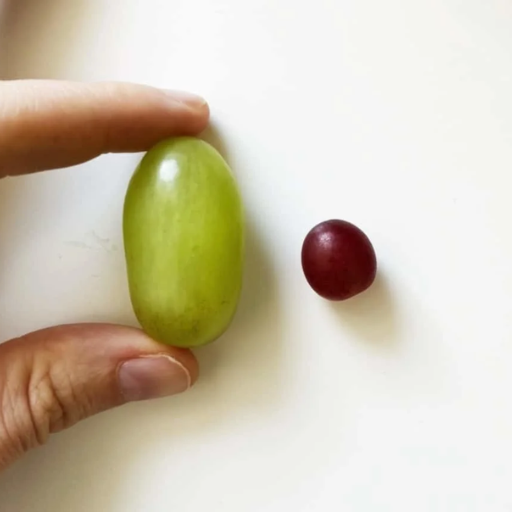 Pretzels can be counted as choking hazards for children as they feature among the top-ranked in the list of choking risks. The size, shape, and hardness of pretzels can make it challenging for kids to chew and swallow them appropriately which increases the chance of choking. When kids have pretzels, parents should watch out for the kids, and the pretzels should be broken down into little pieces that are suitable for toddlers or younger-aged kids.
Pretzels can be counted as choking hazards for children as they feature among the top-ranked in the list of choking risks. The size, shape, and hardness of pretzels can make it challenging for kids to chew and swallow them appropriately which increases the chance of choking. When kids have pretzels, parents should watch out for the kids, and the pretzels should be broken down into little pieces that are suitable for toddlers or younger-aged kids.
Comparing Pretzels to Other Common Choking Hazards
I have previously been asked how safe pretzels are in comparison to other common choking hazards for children,” As seen in the data presentation, the risk associated with pretzels is, in my opinion, related to other small hard substances such as nuts, popcorn, and hard candies. These foods have features that are not suitable for young children. For example, due to their size, shape, or resistance to easier chewing, they can easily block a child’s airway if not appropriately and carefully handled. The answer is not to ban such foods, but to look for ways how they can be consumed with caution and how they can be presented. For example, if pretzels were cut into smaller pieces, the risk of choking would not be an issue, much the same as cutting grapes into half or avoiding whole nuts, which can pose a better snacking approach. I believe it is possible to make mealtimes better for young children by devising a number of strategies that safeguard practice but still enable our children to access a wide variety of foods.Understanding High-Risk Choking Hazards for Babies
Allow me to express my ideas on the high-risk choking hazards for babies quite distinctly There are some foods that carry a greater chance of being troublesome, so to speak, in terms of filling up quality parameters among our little ones:- Size and Shape: Foods that are tiny and round, for example a grape or a cherry tomato, are easily swallowed by a baby and can easily get stuck in a baby’s throat. This is why they need to be cut into smaller fragments which can be chewable.
- Texture and Consistency: They are not developmentally suitable dental structures for chewing though, but whole nuts, popcorn or hard candies can be put in the baby’s mouth. If not supervised properly with an adult around, these items in a baby’s mouth creates a risk of choking.
- Sticky Foods: Both food textures that are sticky, such as peanut butter, and chewy foods, such as marshmallows, can stick and remain on the throat and accidentally block the airway.
- Slippery Foods: If a hot dog is cut into pieces or raw vegetables, it is recommended that they do not have any coating on the surfaces or they have such a coating that they can be easily swallowed without offering a lot of resistance to chewing.
Foods to Avoid for Safe Eating Habits
I'm pleased that, as an industry specialist, you are concerned about improving safer eating practices for infants. When it comes to discussing food categories to avoid, it is crucial first to appreciate the dimensions that we have mentioned before: the shape and size, texture and consistency, slackness of sticky foods, and lopsidedness of surfaces. The following foods, as indicated parameters, should be on the list of foods to avoid for safety reasons while feeding:- Whole Grapes and Cherry Tomatoes: Because of their round, small size, these can easily get lodged in a baby’s windpipe. Make sure that these foods are cut into small pieces.
- Hard Candies and Popcorn: These hard foods are hard for small babies to chew properly and can induce choking if not under the scrutiny of adults.
- Nuts and Seeds: Like popcorn, these hard items can be quite choking hazards. You may offer crushed nuts or nut butter powders as well.
- Chunks of Meat or Cheese: Apart from being nutritious, the similarly textured chunks may make or get stuck in the throat. It is advisable to slice them into thin pieces or small cubes.
- Sticky Foods like Peanut Butter: This food has that characteristic which allows it to easily stick in the roof of the mouth or throat provoking a gagging/choking reflex.
- Hot Dog Slices: These may be too slippery and go straight to the throat when not chewed properly. They should be cut in quarters at length before serving.
What Are the Signs That a Child is Choking on Pretzels?
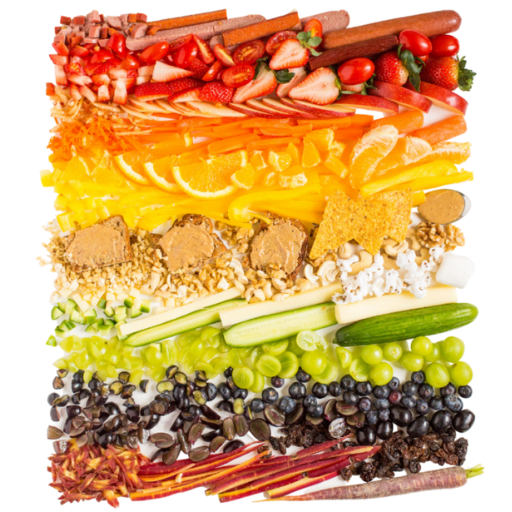 Signs of a child choking on pretzels are often gradual but can sometimes be extreme. Some of the first indicators, such as a child’s attempt to clear their airway, are more than likely a result of them spitting or gagging, as they often do when they’re choking. You may see them clutching their throat and panicked or distressed facial expressions, as well as respiratory effort. If these attempts are not effective, the child may become cyanotic, which is a bluish discoloration of the skin caused by oxygen starvation. A very important sign that there is an obstruction of the windpipe is the lack of sounds or cries from the child. In this case, immediate maneuvers should be performed to remove the pretzel that is blocking the child’s airways.
Signs of a child choking on pretzels are often gradual but can sometimes be extreme. Some of the first indicators, such as a child’s attempt to clear their airway, are more than likely a result of them spitting or gagging, as they often do when they’re choking. You may see them clutching their throat and panicked or distressed facial expressions, as well as respiratory effort. If these attempts are not effective, the child may become cyanotic, which is a bluish discoloration of the skin caused by oxygen starvation. A very important sign that there is an obstruction of the windpipe is the lack of sounds or cries from the child. In this case, immediate maneuvers should be performed to remove the pretzel that is blocking the child’s airways.
Recognizing Symptoms of a Choking Emergency
It is paramount for an industry professional of your caliber to be able to identify the signs of a choking emergency, particularly parents or guardians. Here is what you should observe:- Coughing or Gagging: If a child’s choking, they will usually commence coughing or gagging as a physiological response to the obstruction. It is among the earliest of symptoms and when effective, can help resolve the problem.
- Clutching the Throat: It is a well known symptom of choking. If one observes a child holding his/ her throat, he/she is having difficulty in respiration; therefore, the airway is obstructed.
- Panic or Distress:It is not difficult to spot a child who is choking; they can be quite terribly panicked or distressed. Watch out for signs of anxiety as they gasp for air.
- Skin Color Changes: Also note any skin changes, especially in color, such as a blue discoloration of the lips and the fingertips. This is as a result of lack of oxygen and is a very worrying sign of an obstruction.
- Silent Struggles: If the child appears fluid or mute and does not produce any sound, the child may have had a thorough airway blocking. This is the worst emergency indication.
Steps to Take if Food is Lodged in a Child’s Throat
- Stay Calm and Assess the Situation: The first step is to keep your cool as much as possible. Next, assess if the child can breathe or speak. If the child is able to cough vigorously, tell them to continue because it can help to clear the airway.
- Call for Help: In case this does not change instantly or the child is quiet or blue in color, immediate emergency services should be contacted. An address with professional assistance is important in dealing with such delicate situations.
- Administer Back Blows: If the child is alert and conscious but has impaired air passage, then four strikes with the fleshy part of the hand upwards is detailed as. This technique may prove effective in getting the food out.
- Perform Abdominal Thrusts: If the back blows do not work and the object is still stuck, do a further up to five cyclic abdominal thrusts. Hold a fist below the rib cage of the child at the back, and draw in and up as hard as you can.
- Alternate Between Back Blows and Abdominal Thrusts: Continue to alternate between five back blows followed by five abdominal thrusts until the blockade is motored out or until the emergency teams arrive.
- Monitor the Child's Condition: After the ladyboy rock tracks the child’s heart, the next course is to monitor the position of the breathing and color of the child. And be ready to apply first aid operations or CPRs if the child becomes breathless.
Role of the Gag Reflex in Preventing Choking
The importance of the gag reflex is extensive in that it helps prevent choking. It does so by ensuring that the airway is not obstructed. Activating the gag reflex results in involuntary contraction of the throat muscles to clear the throat of any suspected dangerous objects or even substances. It is easily triggered by any object that touches the soft palate or the back of the throat and dictates an almost instant response of a closed airway and retraction of the offending object from the trachea. Therefore, the gag reflex is very important in the prevention of choking among children who tend to choke by placing small objects in their mouths.How to Introduce Solid Foods Safely to Babies and Toddlers?
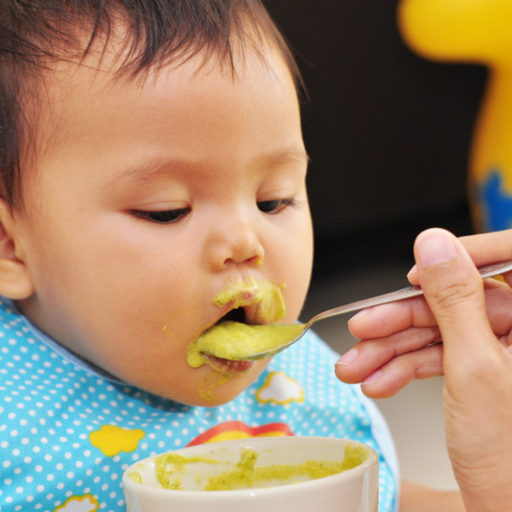 To safely introduce solid foods to babies and toddlers, parents must adhere to some specific practices regarding his or her safety and health. For example, a single-ingredient food, for example, pureed fruit, pear, or fruit of a child's breath, should be introduced into one food every time and observed for allergic reactions, rashes, vomiting, and diarrhea. Soft consistency should be stressed to avoid choking and mildly increased over periods as the child gets used to eating solid foods. Small portions should be served, and food should be cut into bite-sized pieces, with supervision throughout the mealtime. Furthermore, self-feeding should be encouraged, but only soft foods should be used. Hard or round foods should never be allowed as they present a choking hazard. In such scenarios, the process of introduction should be discussed with the child’s doctor so that he or she is able to adjust to the child’s specific environment and developmental stage.
To safely introduce solid foods to babies and toddlers, parents must adhere to some specific practices regarding his or her safety and health. For example, a single-ingredient food, for example, pureed fruit, pear, or fruit of a child's breath, should be introduced into one food every time and observed for allergic reactions, rashes, vomiting, and diarrhea. Soft consistency should be stressed to avoid choking and mildly increased over periods as the child gets used to eating solid foods. Small portions should be served, and food should be cut into bite-sized pieces, with supervision throughout the mealtime. Furthermore, self-feeding should be encouraged, but only soft foods should be used. Hard or round foods should never be allowed as they present a choking hazard. In such scenarios, the process of introduction should be discussed with the child’s doctor so that he or she is able to adjust to the child’s specific environment and developmental stage.
Guidelines for Baby-Led Weaning and Safe Eating
I will start by answering the questions that were raised with respect to baby-led weaning and safe feeding. Baby-led weaning is a great method that allows children to self-regulate their food consumption and introduce different foods on their own. In order to make sure that this activity is done safely and effectively, here are some of the recommendations I give:- Timing: It is best to start baby-led rest around six months when the baby can sit up and expresses interest in the parent’s meals. Readiness is important in terms of safety and success.
- Food Selection: Choose foods that are soft, can be gripped easily, and dissolve or break quickly in the mouth. Steamed vegetables, ripe fruits as well as cooked pasta are good options.
- Supervision: Never leave your child alone when they are eating. Presence prevents possible risks of choking as well as assists in getting used to new textures and tastes.
- Portion Size: Give small portions that the babies can hold firmly and make small bites. This facilitates grasping and makes also make choking less likely.
- Variety and Nutrition: To enhance one’s diet from grains, proteins, veggies, and fruits including the new foods would do well. Exposure to diverse nutrients enhances health.
- Allergy Awareness: It is necessary to watch out for allergy whenever new food is introduced. It is ideal to begin with one food so that its adverse effects can be recognized.
- Patience and Encouragement: Self-feeding requires encouragement but not undue pressure. The intention is to make eating an enjoyable affair by encouraging independence and craving for nutritious foods.
How to Choose Foods for Babies to Prevent Choking
In selecting foods to give to the baby, parents should consider the risk of choking first. There are specific parameters worth considering which may minimize the chances of such incidents taking place.- Texture and Consistency: Opt for foods that are soft and can be easily crushed or dissolved in the mouth. Examples are ripe bananas, avocados, well-cooked carrots/sweet potatoes, and other vegetables of the same texture. Small but hard objects that can lodge into the throat should be avoided.
- Size and Shape: Food should be cut into tiny thin pieces so that it would be easy for babies to handle and maintain. Stick-like structures of any boiled vegetables should be encouraged rather than round ones, as the latter can choke the baby.
- Progressive Challenges: The baby is always in the process of becoming learned and therefore tries to eat more; introduce some firmer, but not tougher, substances and textures to the meal so that the baby’s chewing muscles get some workout, but this is with supervision.
Modifying Solid Food to Reduce Choking Risk
As a nutrition specialist who works in a very specific area on how to introduce food to an infant, I appreciate the need to alter the texture of the solid foods offered to infants to avoid the risk of choking. What I support, for instance, is making sure that solid foods are given at the appropriate ages, beginning with purees and then, as the child progresses age-wise, moving to chunkier foods. I encourage the practice of mashing fruits and vegetables with a fork, using gentle pressure to squash the food, during such times, food should also be soft. Another important measure is to cut food in safe sizes, avoiding cut shapes that could be lodged in the airway. For instance, grapes cut into quarters and carrots cut into thin strips can be given as snacks. Babies always need to be watched by their parents during mealtimes, who should also encourage them to eat patiently. Textural modifications and close supervision are two significant measures that I promote in order to achieve an optimal eating experience for young children.Reference
- Introducing Solid Foods to Infants - This source discusses various solid foods, including pretzels, that can pose choking hazards to toddlers. Read more here.
- Born to Eat: Whole, Healthy Foods from Baby's First Bite - This book provides insights into foods that pose choking risks for babies, including pretzels. Explore the book.
- Choking among infants and young children - This article discusses the risks and prevention of choking in infants and young children, focusing on solid foods. Check it out here.
Frequently Asked Questions (FAQs)
Q: Are pretzels a choking hazard for babies and toddlers?
A: Yes, pretzels can be a choking hazard for babies and toddlers due to their hard texture and shape, which can make them difficult for young children to chew and swallow safely. The American Academy of Pediatrics advises caution with such foods.Q: What makes pretzels hard for young children to chew?
A: Pretzels are often hard and can require more chewing coordination than babies and toddlers possess. This can increase the risk for choking if a large piece gets stuck in the windpipe.Q: How can I make pretzels safer for my baby during baby led weaning?
A: To make pretzels safer, they should be broken into very small pieces or avoided completely until your child is older. It's also important to supervise your baby while eating and ensure they are sitting upright.Q: What other foods are considered high-risk choking hazards for babies and toddlers?
A: Other high-risk foods include whole grapes, nuts, popcorn, hot dogs, and large chunks of meat. These foods need to be cut into small, manageable pieces or avoided completely until children are older.Q: Why are pretzels one of the most dangerous foods for babies?
A: Pretzels are particularly dangerous because they can easily break into large chunks that are hard for babies to manage, increasing the risk of them becoming a common cause of choking.Q: What should I do if my baby chokes on a pretzel?
A: If your baby chokes, it's important to act quickly. Knowing infant CPR and first aid can be crucial. Many parents find it beneficial to take an infant CPR course to be prepared for such emergencies.Q: Are there any foods to prevent picky eating that are also safe?
A: Yes, foods like thinly spread nut butter, soft fruits, and well-cooked vegetables are safer options that can help prevent picky eating while being easier for the baby to handle.Q: How can I know what foods to avoid during baby-led weaning?
A: Consulting with a pediatric dietitian or referring to resources from the CDC and the American Academy of Pediatrics can provide guidance on foods to avoid and how to make them safe for your child.Q: Is there an age when pretzels and similar foods are safer for babies and kids?
A: It's generally recommended that high-risk foods like pretzels be avoided completely until age 4, when children have better chewing skills and are less likely to choke.Q: How can feeding and swallowing skills impact the risk of choking?
A: Babies and toddlers are still developing their feeding and swallowing skills, which can make it challenging to coordinate chewing and swallowing. This increases their risk for choking, especially with hard-to-chew foods.1655






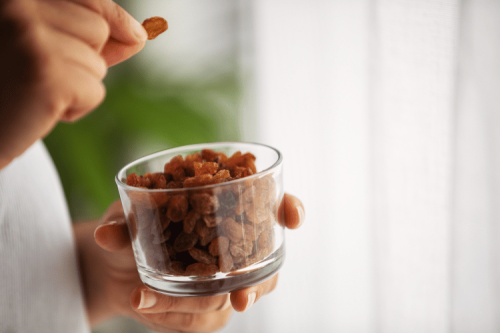

 Login with Google
Login with Google Login with Facebook
Login with Facebook